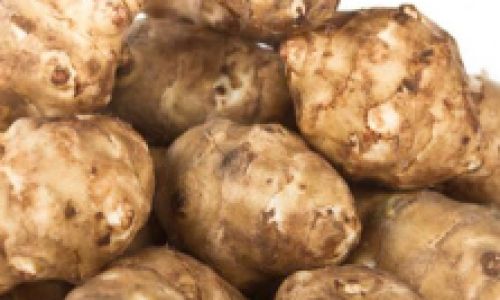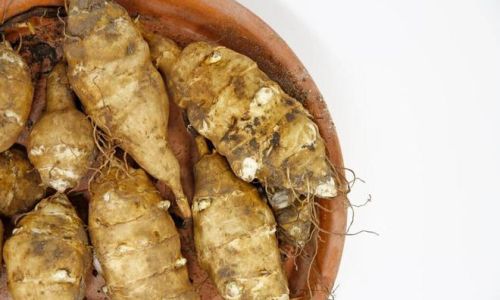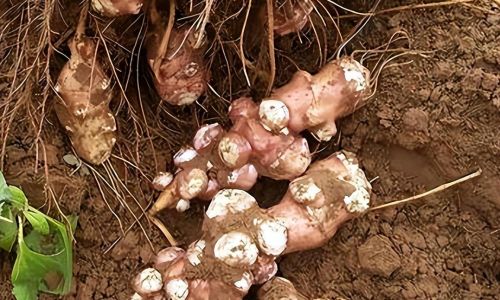Introduction

In the vast tapestry of plant diversity, certain species stand out for their unique attributes and versatility. Among these, the Jerusalem artichoke (Helianthus tuberosus) holds a distinct place, captivating botanists, chefs, and health enthusiasts alike. Often misunderstood and misnamed, this intriguing plant offers a fascinating blend of history, culinary applications, and nutritional benefits. This article aims to demystify the Jerusalem artichoke, exploring its origins, botanical characteristics, cultivation practices, culinary uses, health benefits, and potential challenges associated with its consumption. By the end, readers will have a comprehensive understanding of what exactly this enigmatic plant is and why it deserves a closer look.
Origins and Botanical Classification
The Jerusalem artichoke’s name is a testament to its complex and intriguing history. Despite its moniker, which suggests an exotic Middle Eastern origin, the plant is actually native to North America, specifically regions of Canada and the northern United States. Its scientific name, Helianthus tuberosus, reveals its classification within the sunflower family (Asteraceae), sharing kinship with the common sunflower (Helianthus annuus). The species name ‘tuberosus’ refers to its underground tubers, which are the edible portion of the plant.
Early explorers and settlers encountered the Jerusalem artichoke among the indigenous populations, who had long utilized it as a food source. Its name is believed to have been coined by European settlers, possibly due to a misunderstanding or confusion with similar-sounding plants from the Old World. Over time, the plant spread to Europe and beyond, becoming a staple in various cuisines and medicinal practices.
Botanically, the Jerusalem artichoke is a perennial herbaceous plant, though it is often treated as an annual or biennial in cultivation. It grows to a height of about 1 to 3 meters, with large, rough leaves and yellow flower heads reminiscent of its sunflower relatives. The tubers, which are the primary focus of cultivation, are produced at the base of the plant and can vary in size and shape, ranging from small, knobby nodules to large, smooth bulbs.

Cultivation and Agricultural Practices
Cultivating Jerusalem artichokes is relatively straightforward, making it an appealing choice for both home gardeners and commercial farmers. The plants thrive in a variety of soil types, from sandy to clay, though well-drained, fertile soil is optimal. They are hardy and can tolerate a range of climatic conditions, including cold winters and hot summers, making them adaptable to diverse geographical regions.
Jerusalem artichokes propagate easily from tubers, which can be planted in spring or early summer. Once established, the plants require minimal care, with occasional watering and weeding sufficient for healthy growth. They are relatively resistant to pests and diseases, further reducing the need for intensive management.
Harvesting typically occurs in the autumn, after the plants have gone through their flowering cycle. The tubers are dug up carefully to avoid damaging them and can be stored for several months in a cool, dry place. Proper storage is crucial, as exposed tubers can quickly sprout, making them less desirable for culinary use.
Culinary Uses and Flavor Profiles

In the culinary realm, Jerusalem artichokes offer a versatile and nutritious addition to various dishes. Their flavor profile is unique, combining elements of artichoke and potato with a subtle sweetness and nutty undertone. The tubers can be prepared in numerous ways, from boiling and roasting to frying and baking, making them a versatile ingredient for both savory and sweet recipes.
One of the most popular preparations is simply boiling or steaming the tubers and serving them with a touch of butter or olive oil. Their creamy texture and mild flavor make them an excellent side dish or a base for more complex recipes. Roasted Jerusalem artichokes develop a caramelized exterior, enhancing their natural sweetness and creating a delightful contrast in texture.
For those adventurous in the kitchen, Jerusalem artichokes can be incorporated into soups, stews, salads, and even desserts. Their ability to absorb flavors makes them an ideal candidate for pickling, fermenting, or incorporating into spice blends. Their nutty taste pairs well with strong-flavored ingredients such as garlic, onions, and herbs, creating dishes that are both satisfying and unique.
Nutritional Benefits and Health Considerations
Beyond their culinary appeal, Jerusalem artichokes boast an impressive array of nutritional benefits. They are a rich source of inulin, a type of dietary fiber that promotes healthy digestion and supports the growth of beneficial gut bacteria. Inulin has also been shown to aid in weight management and improve blood sugar control, making Jerusalem artichokes a valuable addition to a balanced diet.

Additionally, these tubers are a good source of vitamins and minerals, including vitamin C, potassium, and magnesium. They contain antioxidants that help protect cells from damage and support overall health. The low glycemic index of Jerusalem artichokes makes them suitable for individuals with diabetes or those seeking to manage their blood sugar levels.
Despite their nutritional benefits, there are some potential considerations for consumption. Jerusalem artichokes contain a high amount of fructooligosaccharides (FOS), which can cause gas and bloating in some individuals, particularly those with sensitive digestive systems. Introducing them gradually to the diet can help minimize these effects.
Cultural Significance and Traditional Uses
Beyond their culinary and nutritional attributes, Jerusalem artichokes hold cultural significance in various regions. Among indigenous communities in North America, the plant was a staple food source, providing nourishment through harsh winters. Its ability to thrive in marginal soils and withstand adverse conditions made it a vital component of survival strategies.
In Europe, particularly in regions with colder climates, Jerusalem artichokes were valued for their hardiness and ability to store well. They were often used in traditional dishes, reflecting the culinary heritage of different cultures. Their unique flavor and texture made them a favored ingredient in everything from hearty stews to festive holiday meals.

Moreover, Jerusalem artichokes have been used in traditional medicine for centuries. Their roots have been employed to treat a variety of ailments, including digestive issues, respiratory problems, and skin conditions. While modern scientific research has yet to fully validate these traditional uses, the plant’s medicinal properties continue to be explored and documented.
Conclusion
In conclusion, the Jerusalem artichoke is a fascinating and versatile plant that warrants closer attention. Its unique blend of culinary appeal, nutritional benefits, and cultural significance makes it a valuable addition to both the garden and the kitchen. By understanding its origins, botanical characteristics, cultivation practices, culinary uses, and health benefits, we can appreciate the full potential of this enigmatic plant.
As we continue to explore and innovate in the realm of food and nutrition, the Jerusalem artichoke offers a compelling case for incorporating more diverse and underappreciated plant species into our diets. Its ability to thrive in diverse environments, provide essential nutrients, and support overall health makes it a true gem of plant diversity. So, the next time you encounter this intriguing tuber, remember its rich history, culinary versatility, and the many ways it can enrich your life.






0 comments